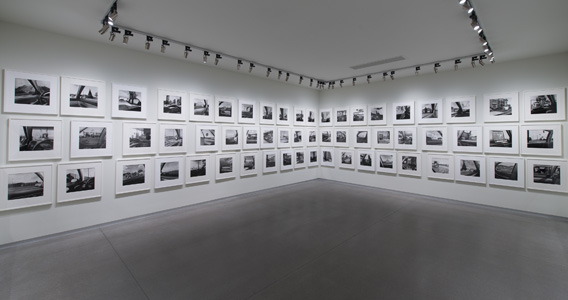San Francisco’s Pier 24—which lay dormant for many years—now houses a brilliant photography collection available for public viewing. The Pilara Foundation Collection is not open to walk-ins, however, and that makes it even more attractive.

Pilara Foundation Collection at Pier 24 is not open to walk-ins. Viewers must make an appointment days in advance before being admitted into the gallery, which means there’s no crowds to fight. Photo courtesy of The Pilara Foundation
By Paul Duclos
Published: February, 2014
San Francisco’s Pier 24—which lay dormant for many years—now houses a brilliant photography collection available for public viewing. The Pilara Foundation Collection is not open to walk-ins, however, and that makes it even more attractive. Viewers must make an appointment days in advance before being admitted into this sacrosanct gallery, which means there’s no great crowds to fight through or any of the other nonsense associated with blockbuster exhibits at public museums.
By collaborating with photographers, educators, collectors and curators, Pilara is able to share diverse ideas with the public without compromising to mass market taste. Furthermore, through its partnerships with local institutions, Pilara also works to advance the creation, scholarship and understanding of the photographic medium.
The Pilara Foundation Collection contains some 2,000 photographs, most from the 20th and 21st centuries. While the collection tends to be American in spirit, with significant holdings of Walker Evans, Dorothea Lange, Robert Frank and Diane Arbus, Europe, Asia and Africa are also represented in important works by August Sander, Daido Moriyama and Zwelethu Mithethwa.
The collection’s organizing principle is the social and topographical change wrought by industrialization. Photography’s capacity as a documentary tool supports this theme as both a witness to such changes and as an industrial process in its own right. Images of human labor, such as Lewis Hine’s Breaker Boys of 1911, one of the earliest photographs in the collection, present photography as an agent of social change, as do images by Dorothea Lange. American race relations have a strong presence in the collection, with images such as Robert Frank’s Charleston, South Carolina, representing one of the most concise commentaries on the subject. Gender and sexual identity are also well represented in works by Peter Hujar and in series such as Garry Winogrand’s Woman Are Beautiful, while Larry Clark’s Teenage Lust offers a grimmer commentary on the sexual revolution.
Pier 24 Photography is currently presenting A Sense of Place, an exhibition that explores how photographs shape the perception of our environments. Together, the exhibited works shift in scale from room-size installations to small, quiet photographs, transporting the viewer through a variety of locations, memories and emotive experiences.
Approaching the grand scale historically reserved for landscape paintings, photographs like Andreas Gurksy’s F1 Pit Stop III, Thomas Demand’s Grotto and Jeff Wall’s In Front of a Nightclub immerse the viewer in an expansive environment—physically placing you within the space of the photograph. Works from Stephen Shore’s Uncommon Places recall the spirit of anytown USA, while in an adjacent gallery Paul Graham’s The Present captures continuous moments in the Manhattan landscape through a series of diptychs and triptychs. Similarly, Lee Friedlander’s America by Car, a series documenting both the everyday and specific eccentricities in the United States from the confines of his car, shifts the viewer to a variety of places from the familiar frame of a car window.
Together, these galleries examine a sense of place through collectively known American locations. Explored through room-sized installations, Eric William Carroll’s diazotypes—a form similar to blueprints—are produced at an unprecedented scale, creating an immersive experience of being in the woods.
Similarly, Erik Kessels’ installation 24 HRS in Photos creates a cascading room filled floor to ceiling with printed versions of every picture uploaded to Flickr during a 24-hour period, allowing the viewer to both visually and physically experience the overwhelming number of photographs shared online.
In three dedicated galleries, works drawn from the Sack Photographic Trust reflect one collector’s sense of place. These galleries present historical photographs in contemporary installations focusing on traditional themes that are well represented in the Sack Photographic Trust.
The pictures assembled in A Sense of Place demonstrate what photography does best: engage our attention with what we might otherwise bypass and inspire us to take another, closer look at the places that surround us.
Artists featured include Robert Adams, Doug Aitken, Uta Barth, Edward Burtynsky, Eric William Carroll, John Chiara, Jan De Cock, Moyra Davey, Thomas Demand, Jose Manuel Fors, Lee Friedlander, Paul Graham, Andreas Gursky, Todd Hido, Rinko Kawauchi, Veronika Kellndorfer, Erik Kessels, Lucia Koch, Richard Learoyd, Richard Misrach, Asako Narahasi, Stephen Shore, Cinthya Soto, Wolfgang Tillmans, Jeff Wall and selections from the Sack Photographic Trust. http://pier24.org/

